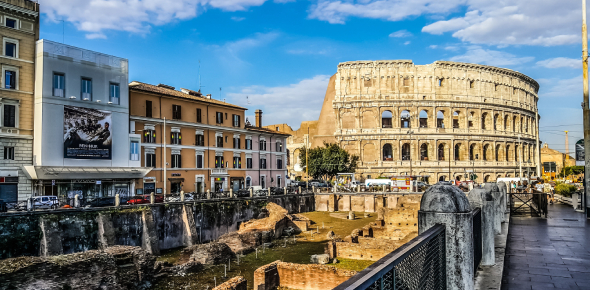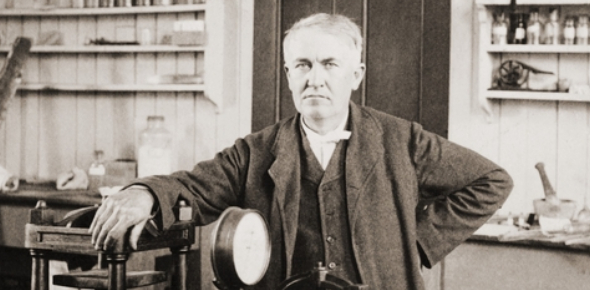Are You Smarter Than A 5th Grader? MCQ Quiz Questions
Do you have what it takes to outwit a 5th grader? Dive into our entertaining and brain-teasing multiple-choice quiz inspired by the classic show "Are You Smarter Than A 5th Grader?" Put your general knowledge to the ultimate test and see if you can answer questions that 5th graders find a breeze.
Are you smarter than a 5th grader, or will their expertise leave you stumped? Take this fun-filled quiz on knowledge and discovery. Challenge your friends to find out who reigns supreme in the world of trivia. Let's settle the score once and for all: Are You Smarter Read moreThan A 5th Grader? Begin the quiz now and put your wits to the test!
5th Grader General Knowledge Questions and Answers
- 1.
Which is the fastest bird on foot?
- A.
Ostrich
- B.
Sparrow
- C.
Eagle
- D.
Dragon
- E.
Woodpecker
Correct Answer
A. OstrichExplanation
Ostriches are the largest and fastest birds on land. They can run at speeds of up to 60-70 kilometers per hour (37-43 miles per hour), making them the fastest birds on foot. Their powerful legs are adapted for rapid running, which helps them escape predators in their natural habitats.Rate this question:
-
- 2.
Which planet is closest to the Sun?
- A.
Venus
- B.
Earth
- C.
Mercury
- D.
Saturn
- E.
Jupiter
Correct Answer
C. MercuryExplanation
Mercury is the closest planet to the Sun, with an average distance of about 36 million miles. Its proximity to the Sun results in extreme temperatures, ranging from scorching heat on the sunlit side to frigid cold on the dark side. Mercury's small size and lack of a substantial atmosphere make it a challenging planet to observe and study.Rate this question:
-
- 3.
A Heptagon is a shape with how many sides?
- A.
4
- B.
6
- C.
7
- D.
8
- E.
9
Correct Answer
C. 7Explanation
A heptagon is a geometric shape with seven sides and seven angles. It is classified as a polygon, which is any closed shape with straight sides. Each of the seven angles in a regular heptagon is equal, making it a symmetrical shape. The term "heptagon" comes from the Greek words "hepta," meaning seven, and "gonia," meaning angle. Heptagons can be found in various mathematical and architectural contexts.Rate this question:
-
- 4.
How long is one regular term for a Member of the House of Representatives in U.S?
- A.
3 years
- B.
1 year
- C.
2 years
- D.
4 years
- E.
6 years
Correct Answer
C. 2 yearsExplanation
Members of the House of Representatives serve two-year terms. Elections for all 435 seats in the House are held every two years, during even-numbered years. Representatives can serve an unlimited number of terms if they continue to be re-elected by their constituents. This short term length was designed to keep Representatives closely connected to the changing opinions and needs of their constituents.Rate this question:
-
- 5.
Which of the following states is NOT on the Gulf of Mexico?
- A.
Georgia
- B.
Texas
- C.
Florida
- D.
Alabama
- E.
Louisiana
Correct Answer
A. GeorgiaExplanation
Georgia is a state that is not on the Gulf of Mexico, as it borders the Atlantic Ocean instead. In contrast, Texas, Florida, Alabama, and Louisiana all have coastlines along the Gulf of Mexico. These states are positioned along the southern edge of the United States, with varying lengths of coastline that connect to the Gulf. Its capital and largest city is Atlanta, a major cultural and economic hub in the region. Known as the "Peach State", Georgia has a diverse landscape that ranges from the Appalachian Mountains in the north to coastal plains in the south.Rate this question:
-
- 6.
What is the smallest prime number?
- A.
0
- B.
1
- C.
2
- D.
3
- E.
5
Correct Answer
C. 2Explanation
The smallest prime number is 2. It is the only even prime number, as all other even numbers can be divided by 2 and are therefore not prime. Prime numbers are natural numbers greater than 1 that are divisible by only 1 and themselves, and 2 fits this definition, making it the smallest prime number.Rate this question:
-
- 7.
What is the largest South American country by area?
- A.
Argentina
- B.
Brazil
- C.
Chile
- D.
Mexico
- E.
Peru
Correct Answer
B. BrazilExplanation
Brazil is the largest South American country by area. It covers a vast landmass, spanning over 8.5 million square kilometers. With its expansive territory, Brazil surpasses other South American countries like Argentina, Chile, Mexico, and Peru in terms of size.Rate this question:
-
- 8.
Which one of the following states is NOT part of the Four Corners?
- A.
New Mexico
- B.
Utah
- C.
Colorado
- D.
Nevada
- E.
Arizona
Correct Answer
D. NevadaExplanation
Nevada is not part of the Four Corners. The Four Corners is a region in the southwestern United States where the borders of four states meet: Arizona, Colorado, New Mexico, and Utah. Nevada is not one of the states that meet at this intersection.Rate this question:
-
- 9.
Who was the first person to step foot on the moon?
- A.
Neil Armstrong
- B.
Edwin 'Buzz' Aldrin
- C.
John Glenn
- D.
Sally Ride
- E.
Alan Shepard
Correct Answer
A. Neil ArmstrongExplanation
Neil Armstrong was the first person to step foot on the moon. This historic event occurred on July 20, 1969, during the Apollo 11 mission. Armstrong, along with Buzz Aldrin, landed the lunar module Eagle on the moon's surface and Armstrong became the first human to set foot on another celestial body. His famous words, "That's one small step for man, one giant leap for mankind," will always be remembered as a monumental achievement in human history.Rate this question:
-
- 10.
'Carefully' is an example of what type of word?
- A.
Adjective
- B.
Noun
- C.
Verb
- D.
Adverb
- E.
Pronoun
Correct Answer
D. AdverbExplanation
'Carefully' is an example of an adverb because it modifies the verb 'is' by describing how the action is performed. Adverbs typically provide information about how, when, where, or to what extent an action is done. In this case, 'carefully' tells us how something is being done, indicating the manner in which the action is performed.Rate this question:
-
- 11.
In the Northern Hemisphere, what month is the autumnal equinox?
- A.
August
- B.
September
- C.
October
- D.
November
- E.
April
Correct Answer
B. SeptemberExplanation
The autumnal equinox marks the moment when day and night are nearly equal in length, signaling the beginning of autumn. It typically happens around September 22 or 23 each year. This event is caused by the tilt of the Earth's axis and its orbit around the Sun, leading to the Sun crossing the celestial equator.Rate this question:
-
- 12.
Emma has 2-yardsticks. She also has a 12-inch ruler. She laid them end-to-end in a line. How many feet long is the line?
- A.
3 Feet
- B.
5 Feet
- C.
7 Feet
- D.
9 Feet
- E.
11 Feet
Correct Answer
C. 7 Feet -
- 13.
Inca civilizations were concentrated on what continent?
- A.
South America
- B.
Africa
- C.
North America
- D.
Asia
- E.
Europe
Correct Answer
A. South AmericaExplanation
The correct answer is South America because the Inca civilizations were primarily located in the Andes region of South America, specifically in present-day Peru, Ecuador, Bolivia, and parts of Colombia and Chile. The Inca Empire was the largest empire in pre-Columbian America and thrived in the 15th and 16th centuries. Their capital city, Cusco, was located in modern-day Peru. The Inca civilization is known for its advanced agricultural practices, impressive architecture, and extensive road network, including the famous Machu Picchu.Rate this question:
-
- 14.
What state is the Grand Canyon in?
- A.
California
- B.
Arizona
- C.
North Dakota
- D.
New Mexico
- E.
South Dakota
Correct Answer
B. ArizonaExplanation
The Grand Canyon is a breathtaking natural wonder located in northern Arizona, known for its immense size, vibrant layers of rock, and geological significance. Stretching approximately 277 miles (446 km) in length, up to 18 miles (29 km) in width, and over a mile (1.6 km) deep, it reveals nearly 2 billion years of Earth's geological history. The Colorado River carved the canyon over millions of years, and it continues to flow through it today.Rate this question:
-
- 15.
Who was the first president of the United States?
- A.
John Adams
- B.
Abraham Lincoln
- C.
Thomas Jefferson
- D.
George Washington
- E.
John Jay
Correct Answer
D. George WashingtonExplanation
George Washington was the first president of the United States. He served as the president from 1789 to 1797. Washington played a crucial role in the formation of the United States and was a key leader during the American Revolutionary War. He was highly respected for his leadership qualities and his commitment to the principles of democracy. Washington's presidency set important precedents for future presidents and helped establish the foundations of the American government.Rate this question:
-
- 16.
What is the largest planet in our solar system?
- A.
Earth
- B.
Jupiter
- C.
Mars
- D.
Saturn
Correct Answer
B. JupiterExplanation
Jupiter is a gas giant with a diameter of approximately 143,000 kilometers (88,846 miles), making it the largest planet by both mass and volume. It is so massive that more than 1,300 Earths could fit inside it. Known for its Great Red Spot, a giant storm that has raged for centuries, and its many moons, Jupiter dominates the outer solar system.Rate this question:
-
- 17.
Name the hardest natural mineral.
- A.
Iron
- B.
Cobalt
- C.
Quartz
- D.
Silver
- E.
Diamond
Correct Answer
E. DiamondExplanation
Diamond is considered the hardest natural mineral because of its exceptional hardness and durability. It is composed of carbon atoms arranged in a crystal lattice structure, which gives it its unique properties. Diamond is known for its ability to resist scratching and is often used in industrial applications such as cutting, grinding, and drilling. Its hardness is a result of the strong covalent bonds between its carbon atoms, making it the hardest known natural material.Rate this question:
-
- 18.
What is it called when the moon blocks the sun?
- A.
Solar Eclipse
- B.
Lunar Eclipse
- C.
Black hole
- D.
Cosmos
- E.
Constellation
Correct Answer
A. Solar EclipseExplanation
A solar eclipse is a celestial event that occurs when the moon passes between the Earth and the sun, blocking some or all of the sun's light from reaching Earth. This results in a temporary darkening of the sky during the day as the moon casts a shadow on the Earth's surface. There are different types of solar eclipses, including total, partial, and annular, depending on the alignment of the sun, moon, and Earth. During a total solar eclipse, the sun is completely obscured by the moon, creating a dramatic and brief period of darkness in the daytime.Rate this question:
-
- 19.
Name the war that occurred between the Union and the Confederacy?
- A.
American revolutionary war
- B.
The American Civil War
- C.
Mexican war
- D.
War of 1812
- E.
World war II
Correct Answer
B. The American Civil WarExplanation
The American Civil War is the correct answer because it was a war that occurred between the Union and the Confederacy. This war took place from 1861 to 1865 and was fought over issues such as slavery, states' rights, and the preservation of the Union. It was a significant event in American history and resulted in the abolition of slavery and the reunification of the United States.Rate this question:
-
- 20.
What is the area of the square with a side of 5 cm?
- A.
50 square cm
- B.
5 square cm
- C.
25 square cm
- D.
15 square cm
- E.
20 square cm
Correct Answer
C. 25 square cmExplanation
The area of a square is found by multiplying the length of one side by itself (squaring the side). Since the square has a side of 5 cm, we calculate 5 cm * 5 cm. This gives us 25 square cm, which is the total area covered by the square.Rate this question:
-
- 21.
Which is the largest and the strongest bone in the human body?
- A.
Femur
- B.
Radius
- C.
Ulna
- D.
Tibia
- E.
Innominate bone
Correct Answer
A. FemurExplanation
The femur, commonly known as the thigh bone, is the largest and strongest bone in the human body. Located in the upper leg, it spans from the hip joint to the knee joint. Structurally, the femur is built to bear and transmit the forces generated by movement, including walking, running, and jumping.Rate this question:
-
- 22.
How much is the sum of the three angles of a triangle?
- A.
180 degrees
- B.
90 degrees
- C.
360 degrees
- D.
240 degrees
- E.
720 degrees
Correct Answer
A. 180 degreesExplanation
A triangle is a polygon with three sides and three angles. The reason the sum of the angles to 180 degrees can be understood using geometric principles. If you draw a straight line (which measures 180 degrees) and then form a triangle by connecting points along this line and adding a third point above or below, the angles of the triangle will always combine to make a straight line. In non-Euclidean geometry, such as on a curved surface, this rule may not apply, but for standard geometry, the sum of the angles is always 180 degrees.Rate this question:
-
- 23.
The American President John F. Kennedy was assassinated in which year?
- A.
1890
- B.
1910
- C.
1943
- D.
1950
- E.
1963
Correct Answer
E. 1963Explanation
The American President John F. Kennedy was assassinated on November 22, 1963. He was shot while riding in a motorcade in Dallas, Texas, and his assassination is one of the most significant and tragic events in American history. The incident shocked the nation and the world, leading to various investigations and conspiracy theories regarding the circumstances of his death.Rate this question:
-
- 24.
Which is a prime number?
- A.
8
- B.
17
- C.
30
- D.
63
- E.
99
Correct Answer
B. 17Explanation
17 is the only prime number among the given options. A prime number is a number that is only divisible by 1 and itself, and 17 fits this criteria as it is not divisible by any other number. The other numbers in the options, such as 8, 30, 63, and 99, are all divisible by numbers other than 1 and themselves, making them composite numbers.Rate this question:
-
- 25.
Which is the smallest planet in the solar system?
- A.
Mercury
- B.
Earth
- C.
Jupiter
- D.
Neptune
- E.
Uranus
Correct Answer
A. MercuryExplanation
Mercury is the smallest planet in our solar system, with a diameter of roughly 3,030 miles. It's also the closest planet to the sun, zipping around our star in just 88 Earth days. Despite its small size, Mercury is a fascinating world with a heavily cratered surface and extreme temperature variations.Rate this question:
-
- 26.
How many minutes are there in 3 hours 45 minutes?
- A.
180
- B.
160
- C.
225
- D.
345
- E.
245
Correct Answer
C. 225Explanation
To calculate the total number of minutes in 3 hours and 45 minutes:
Convert hours to minutes:
3 hours = 3 × 60 = 180 minutes
Add the extra minutes:
180 minutes (from 3 hours) + 45 minutes = 225 minutes
So, the total is 225 minutes.Rate this question:
-
- 27.
What ancient civilization built the city of Machu Picchu in the Andes Mountains of Peru?
- A.
The Aztecs
- B.
The Mayans
- C.
The Incas
- D.
The Romans
Correct Answer
C. The IncasExplanation
The Incas, an ancient civilization in South America, built Machu Picchu in the 15th century. Situated in the Andes Mountains of Peru, it's an architectural marvel and a testament to Incan engineering. Machu Picchu remains a significant cultural and historical site, attracting tourists and scholars worldwide.Rate this question:
-
- 28.
Which is the capital of Belgium?
- A.
Ottawa
- B.
Brussels
- C.
Paris
- D.
Berlin
- E.
Buenos Aires
Correct Answer
B. BrusselsExplanation
Brussels is not only the capital city of Belgium but also serves as the administrative center of the European Union, often referred to as the "capital of Europe." It is known for its historical architecture, vibrant culture, and significant role in international politics and diplomacy. Brussels has a rich and complex history that dates back over a thousand years. It was founded as a small fort on the Senne River around the 10th century and grew into an important economic and political hub during the medieval period.Rate this question:
-
- 29.
What kind of pattern were Roman cities built in?
- A.
Grid
- B.
Skeleton
- C.
Plain
- D.
Gated
- E.
Layered
Correct Answer
A. GridExplanation
Roman city planning followed a systematic approach, influenced by their military camp layouts (known as castra). These cities featured a rectangular grid of streets, with two main roads—the cardo (running north-south) and the decumanus (running east-west)—dividing the city into blocks or insulae. This grid structure made navigation and urban planning more efficient, and the design was used both in newly founded cities and Romanized areas throughout the empire. This organized layout was key to the functioning of Roman cities, facilitating trade, defense, and public services.Rate this question:
-
- 30.
Which was the first patented invention of Thomas Edison?
- A.
Light Bulb
- B.
Carbon Microphone
- C.
Telegraph
- D.
Gramophone
- E.
Electrographic vote-recorder
Correct Answer
E. ElectrograpHic vote-recorderExplanation
The electrographic vote-recorder was the first patented invention of Thomas Edison. This device was designed to record votes in a legislative chamber electronically. It consisted of a series of electrical switches connected to a central recording station. When a legislator pressed a button to cast their vote, the corresponding switch would close and the vote would be recorded. This invention was significant as it aimed to streamline and modernize the voting process, making it more efficient and accurate.Rate this question:
-
Quiz Review Timeline +
Our quizzes are rigorously reviewed, monitored and continuously updated by our expert board to maintain accuracy, relevance, and timeliness.
-
Current Version
-
Oct 02, 2024Quiz Edited by
ProProfs Editorial Team -
Oct 16, 2007Quiz Created by
Jitney
- Aptitude Test Quizzes
- Course Test Quizzes
- Driving Test Quizzes
- English Test Quizzes
- FCAT Quizzes
- Intelligence Test Quizzes
- Medical Test Quizzes
- Mock Test Quizzes
- Philosophy Test Quizzes
- Practice Test Quizzes
- Pretest Quizzes
- Safety Test Quizzes
- Skill Assessment Quizzes
- Spelling Test Quizzes
- Standardized Test Quizzes



(136).jpg)
(10).jpg)
.jpg)

(23).jpg)
(18).jpg)
(21).jpg)
(15).jpg)
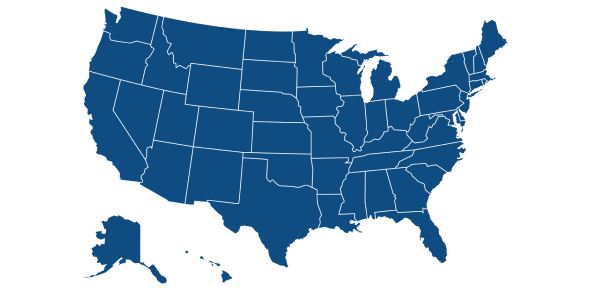
(15).jpg)
(10).jpg)
(12).jpg)
(14).jpg)
(9).jpg)
(10).jpg)
.jpg)
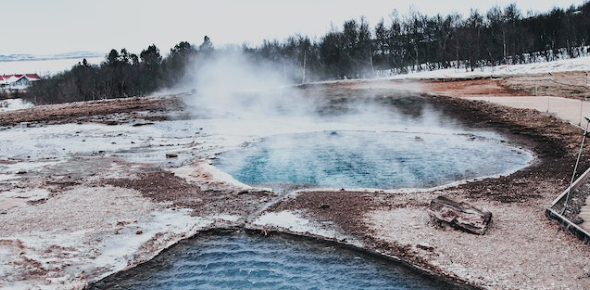

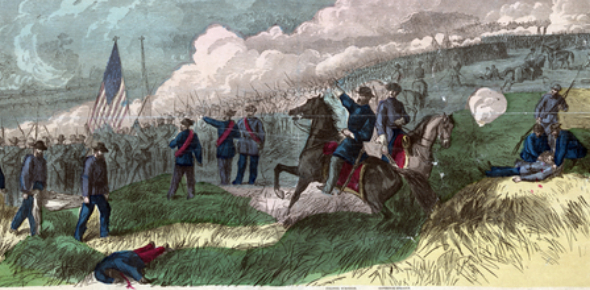




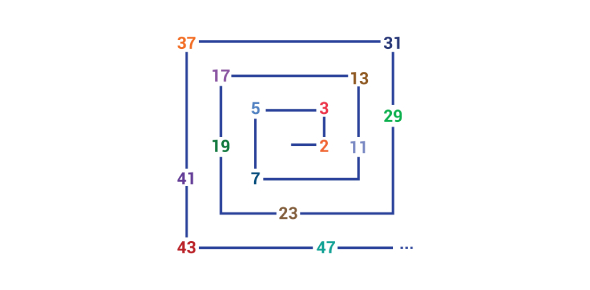


.jpg)
